A gripping account of three dramatic journeys that changed history. The fabled Silk Road conjures up the sights, smells and sounds of faraway lands. But traveling the Silk Road took years, and those who set out encountered bandits, starvation and treacherous storms. Adventures on the Ancient Silk Road introduces readers to three great historical figures: Chinese Buddhist Xuanzang, whose 16-year journey from China to India and back (629-645 AD) is the only source we have for huge chunks of the history and geography of this time. His successful search for Buddhist scriptures changed the course of two great nations. Genghis Khan, bred from infancy to be a warrior, brought the Mongol clans together. He established the greatest empire the world had seen, which ruled the Silk Road from 1201 to 1227. Italian merchant Marco Polo journeyed through China from 1271 to 1295. He changed the way Europe saw the world, and his book even inspired Columbus to sail west across the Atlantic Ocean in search of China. Beautiful photographs and art depicting the ancient routes and peoples bring the stories to life. Maps, sidebars and an afterword that updates the story of the Silk Road are also featured.
Author: auraenid
Japan
This book introduces the people and the way they live, culture, weather, landscapes, towns and cities of Japan.
Fu Finds the Way
When the warrior Chang challenges young Fu to a duel, Fu panics. His only hope is that the Master will train him, just as he’s trained all the young warriors of the village. But instead of teaching Fu to fight, the Master teaches him to pour tea. Fu learns purpose, flow and patience in the process, but will it be enough to defeat the mighty Chang? With his signature breathtaking art, John Rocco has created a modern parable full of adventure, heart, humor, and a gentle message about the importance of focus and finding joy in simple tasks.
The Chinese Thought of It: Amazing Inventions and Innovations (We Thought of It)
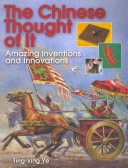
How Chinese ingenuity changed the world. Acupuncture, gunpowder and the secrets to spinning silk are innovations that we have come to associate with China. But did you know that the Chinese also invented the umbrella? And toilet paper, initially made from rice straw clumped together, was first used in China! Through the ages, the Chinese have used the resources available to them to improve their lives. Their development of the compass and the paddleboat helped facilitate the often difficult tasks of travel and trade, and many foods associated with health and wellness — from green tea to tofu — have their origins in China. Other interesting innovations include: the suspension bridge and the wheelbarrow playing cards. With descriptive photos and information-packed text divided into sections including farming, food and games, this third book in the “We Thought of It” series explores the fascinating origins of much that surrounds us today.
1968
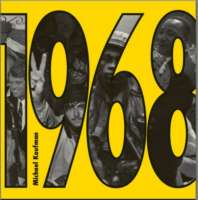
1968, the year America grew up from racial and gender equality fights to the struggle against the draft and the Vietnam war. In 1968 Americans asked questions and fought for their rights. Now, 30 years later, we look back on that seminal year–from Dr. Martin Luther King, Jr.’s assasination to the Columbia University riots to our changing role among other nations–in this gripping introduction to the events home and abroad. The year we first took steps in space, the year we shaped the present, 1968 presented by a former New York Times writer who lived through it all, shares the story with detail.
Getting There
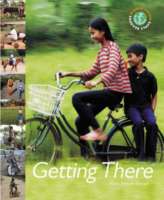
This book depicts children and adults engaging in many of these modes of transportation in diverse cultural settings.
Grandfather’s Journey
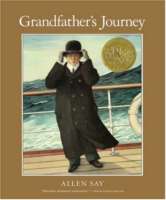
A Japanese American man recounts his grandfather’s journey to America which he later also undertakes, and the feelings of being torn by a love for two different countries.
See the review at WOW Review, Volume VII, Issue 4
Nursery Tales around the World
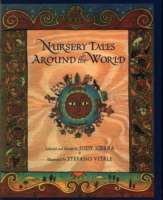
An international collection of 18 nursery tales for young children, grouped by theme, such as “Runaway Cookies,” “Slowpokes and Speedsters,” and “Chain Tales”.
Kamishibai Man
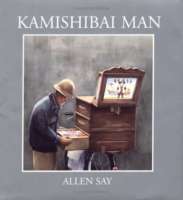
The Kamishibai man used to ride his bicycle into town where he would tell stories to the children and sell them candy, but gradually, fewer and fewer children came running at the sound of his clappers. They were all watching their new televisions instead. Finally, only one boy remained, and he had no money for candy. Years later, the Kamishibai man and his wife made another batch of candy, and he pedaled into town to tell one more story—his own. When he comes out of the reverie of his memories, he looks around to see he is surrounded by familiar faces—the children he used to entertain have returned, all grown up and more eager than ever to listen to his delightful tales.
Something for School
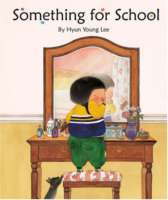
On the first day of kindergarten, a teacher asks the boys and girls to line up, and Yoon lines up with the other girls. But when some children mistake Yoon for a boy because of her short hair, Yoon bursts into tears. At home, Yoon finds a solution. Her sister s special headband is perfect! When she wears it to kindergarten, no one teases or mistakes her for anything but who she is! Yoon has a lovely time with her new friends.But Yoon’s sister has been missing her special headband so when Yoon has to go back to school without it, she s worried all over again. Thankfully, her friends like Yoon exactly the way she is.
See the review at WOW Review, Volume 4, Issue 1
